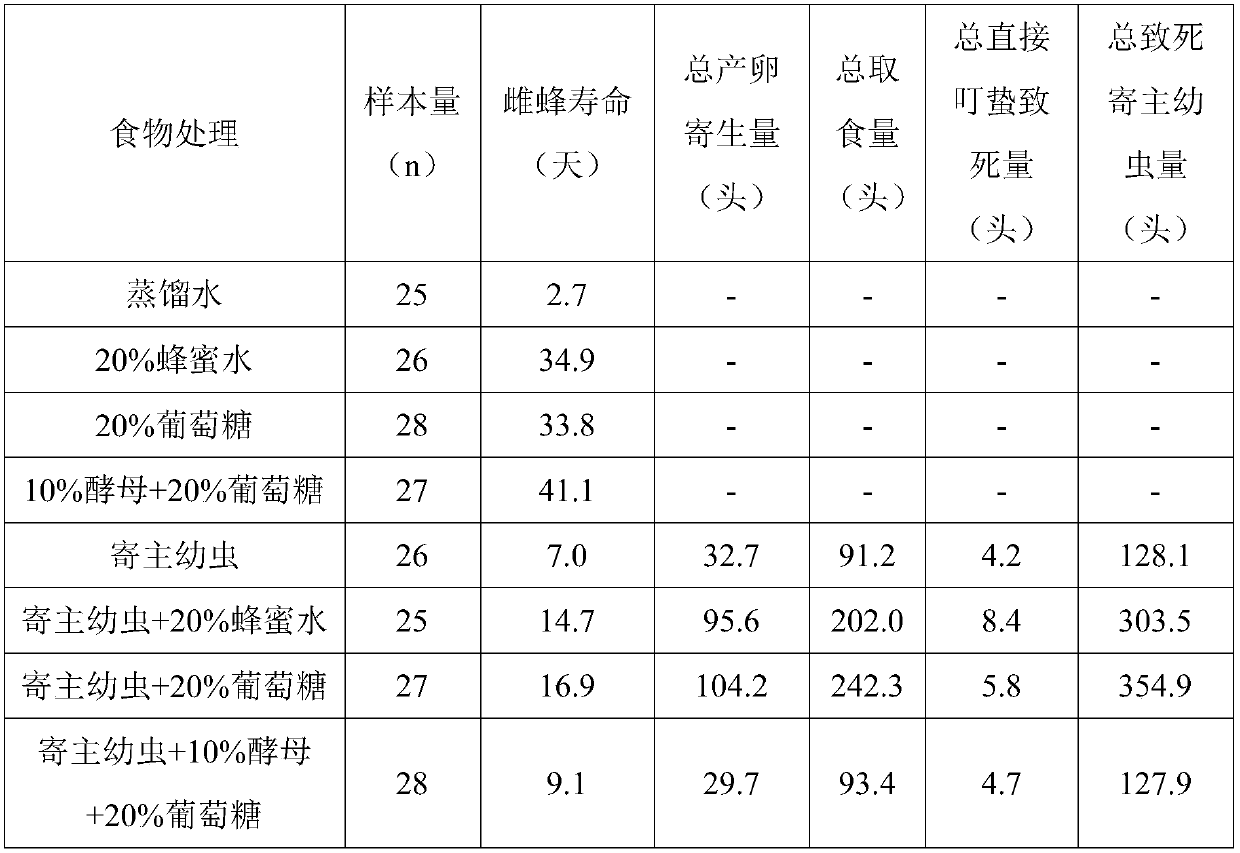Manual scaled feeding method for diglyphus wani Liu, Zhu & yefremova sp. nov.
A technology for larvae and larvae, which is applied to the field of artificial large-scale rearing of the larvae of Liriomyza wanyi, and can solve the problems of different optimal conditions for establishment of parasitic wasp populations, the repeatability of feeding methods to be improved, and the inconvenient use of rearing equipment, etc. problems, to achieve the effects of easy control of host density, increased spawning parasitic rate, and convenient and fast feeding.
- Summary
- Abstract
- Description
- Claims
- Application Information
AI Technical Summary
Problems solved by technology
Method used
Image
Examples
Embodiment 1
[0028] The artificial large-scale breeding method of Liriomyza wanneri comprises the following steps:
[0029] (1) Selection of milk pinto plants as host plants: 11 kinds of host plants were selected, including British red kidney beans, milk pinto beans, lettuce, rapeseed, Shanghai green, broad beans, collard greens, green leafy cabbage, kale, and peas. Liriomyza pea was raised under humidity conditions, but by comparison, lettuce leaves were the most effective for indoor breeding to establish populations, followed by rapeseed, Shanghai green, Chinese kale, British red kidney beans, and milk pinto beans. However, during the breeding process, each leaf of lettuce only has a density of 20 host larvae at most, and the growth cycle of lettuce, rapeseed, Shanghai green, kale, and cabbage is relatively long, and it usually takes about 2 months to reach a usable state. And planting method is loaded down with trivial details, and seedling production cost is higher. In addition, the d...
Embodiment 2
[0038] Potential of controlling Liriomyza sativae to Liriomyza sativae under different temperatures in embodiment 2
[0039] Prepare in advance the milky bean leaf petri dish containing 30-35 late 2nd instar to early 3rd instar host larvae of Liriomyza sativae. Production of host food petri dishes: 1) Select about 30 leaves of milk bean containing about 30 late 2nd and 3rd instar larvae of Liriomyza sativae; 2) Make agar (Coolaber TM , Cat#CA1331-1KG); 3) Pour the agar into the petri dish, cut off the leaves that contain about 30 leaves of Liriomyza sativae larvae from the end of the 2nd instar to the early stage of the 3rd instar, and insert the petioles into the agar. Gently place on the agar; 4) Seal the seal with a parafilm, and pierce holes in the parafilm with a dissecting needle; 5) Place the prepared culture dish in an artificial climate incubator (temperature T=25±1°C, relative humidity RH= 30±5%, photoperiod L:D=14:10).
[0040] Select the Liriomyza wanshii wasps t...
example 3
[0044] Example 3 The Potential of Liriomyza wansonii to control Liriomyza sativae under different nutrition
[0045] From the beekeeping cages in the artificial climate incubator (temperature T = 25 ± 1 ° C, relative humidity RH = 50 ± 5%, light cycle L: D = 14:10), select the first eclosion at 8:00-10:00 in the morning wan's Liriomyza spp. Provide 4 treatments: 20% glucose + host larvae, 20% honey water (acacia honey) + host larvae, 20% glucose + 10% yeast + host larvae, distilled water + host larvae, and the provided host larvae are about 30 At the end of the 2nd instar - the beginning of the 3rd instar, Liriomyza sativae larvae are used as food; at the same time, it is necessary to detect the lifespan of parasitoids that only provide 20% glucose, 20% honey water, 20% glucose + 10% yeast, distilled water, and then put them all in In an artificial climate chamber (temperature T=25±1°C, relative humidity RH=50±5%, photoperiod L:D=14:10), experiments were carried out on the in...
PUM
 Login to View More
Login to View More Abstract
Description
Claims
Application Information
 Login to View More
Login to View More - R&D Engineer
- R&D Manager
- IP Professional
- Industry Leading Data Capabilities
- Powerful AI technology
- Patent DNA Extraction
Browse by: Latest US Patents, China's latest patents, Technical Efficacy Thesaurus, Application Domain, Technology Topic, Popular Technical Reports.
© 2024 PatSnap. All rights reserved.Legal|Privacy policy|Modern Slavery Act Transparency Statement|Sitemap|About US| Contact US: help@patsnap.com










